I don’t usually put dolls in my dollhouses, but I made an exception when I bought a little resin baby for the nursery.
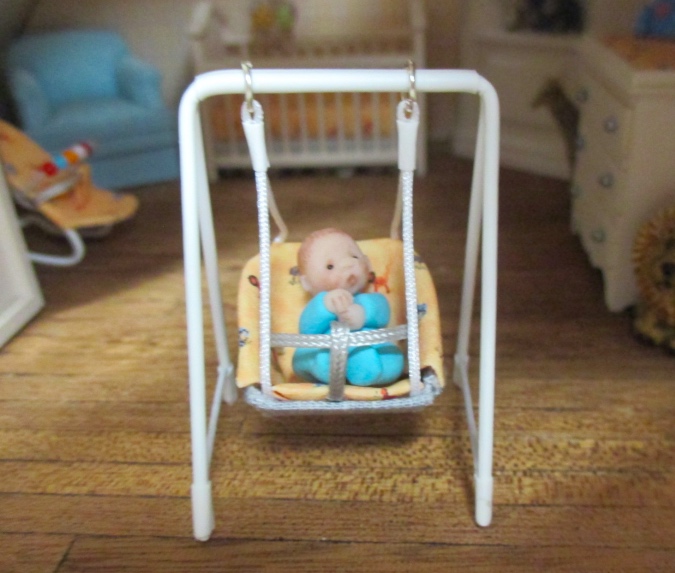
Since then I’ve been keeping an eye out for dolls to put in the other kids’ rooms — I need a little girl (age 4-ish) and an older girl (age 12-ish). An eBay seller named karens-mini-bears makes adorable baby and kid dolls, sometimes in half scale, but they’re usually 24-hour auctions with a lot of people bidding, and I haven’t waded in.
Recently I saw this little girl on eBay, offered by seller by_lana, and I loved her on sight. The short, messy hair, the little smile, the dress — she just looked like the right doll for the little girl’s room. I hit Buy It Now and paid… and then I looked more carefully at the description. She was only 1″ tall, which would be 24 inches in half scale. I Googled “How tall is a four year old” and Google informed me that the average four year old is 40 inches tall.
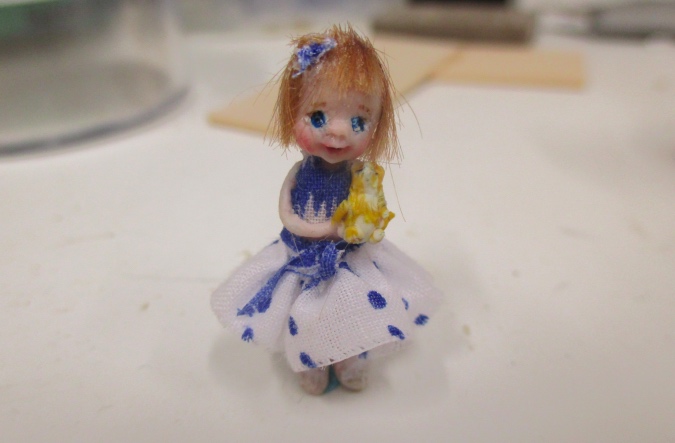
I emailed the seller but she’d already sent the package. She told me not to worry, if the doll was too small she accepted returns.
The doll arrived (very quickly from the UK!) while I was working on the Robin Betterley kits. She’s small next to the dollhouse, but maybe not *too* small?
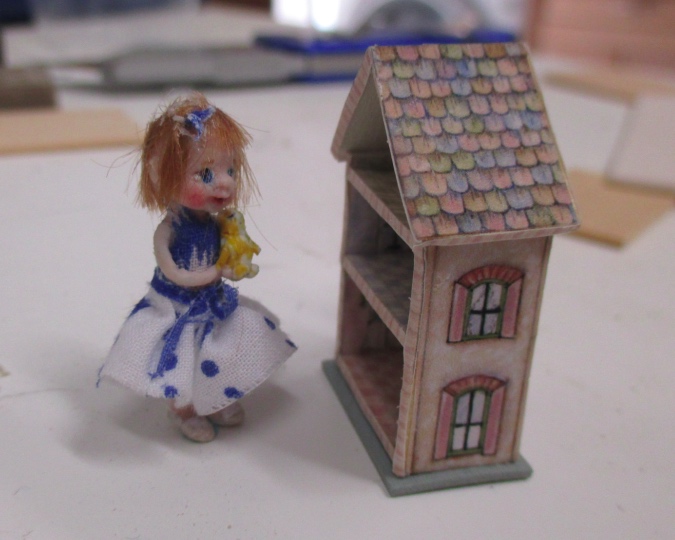
Unfortunately, yes, she’s too small. Especially when the room is strewn with toys, she looks like, well, a doll. Not like a child.
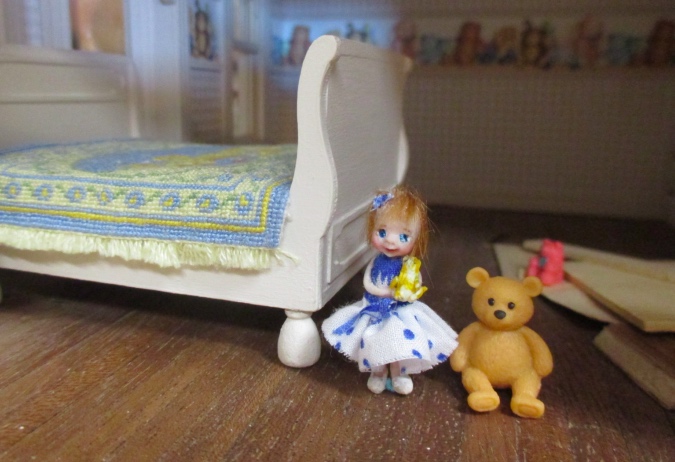
I sadly emailed the seller to tell her the doll would be too small. She refunded my money and graciously told me to keep the doll — excellent customer service, but I felt bad that I hadn’t looked at the measurements more closely before I purchased.


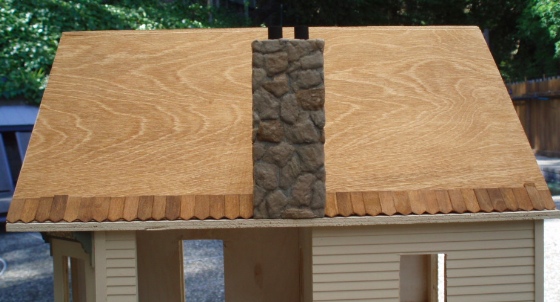

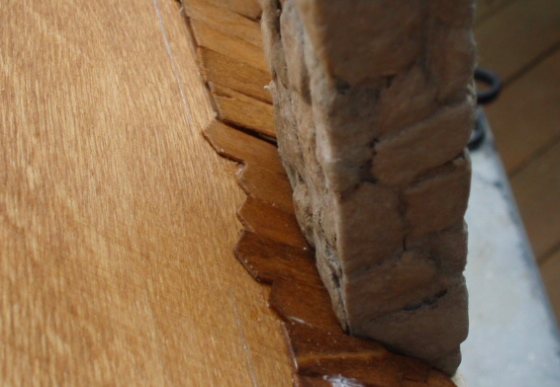
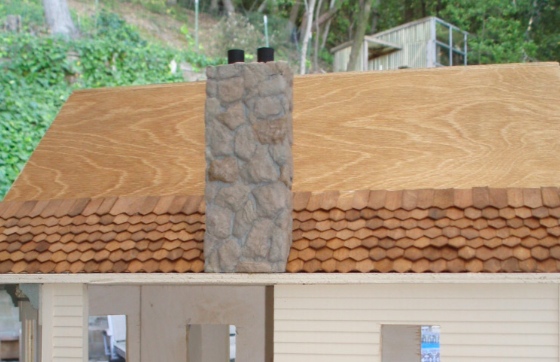
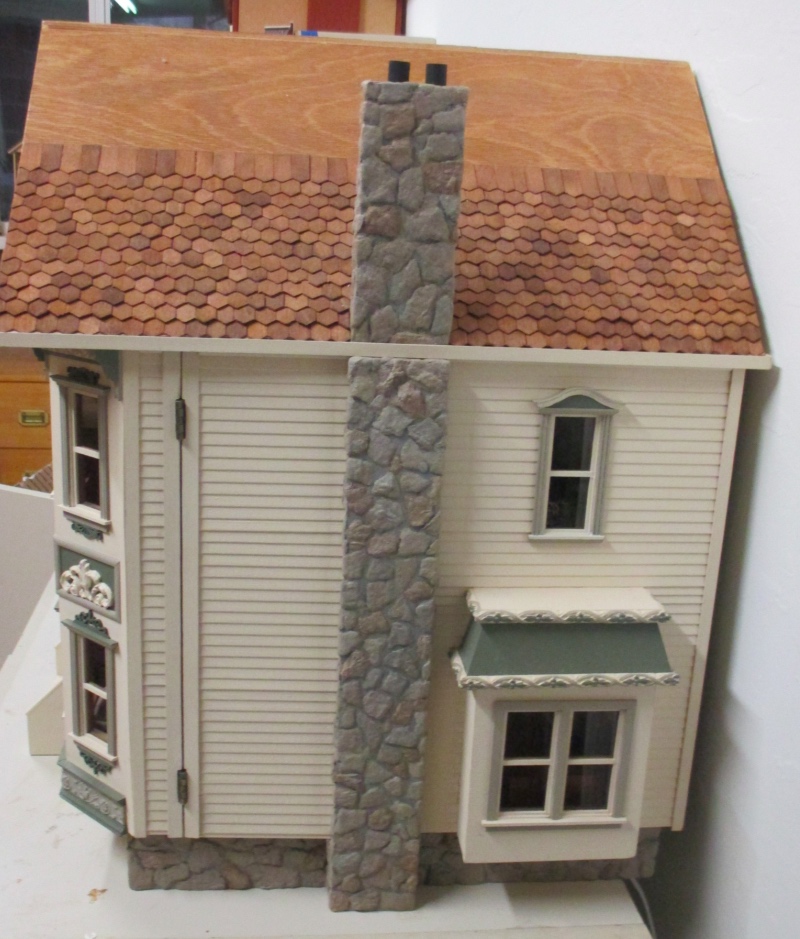
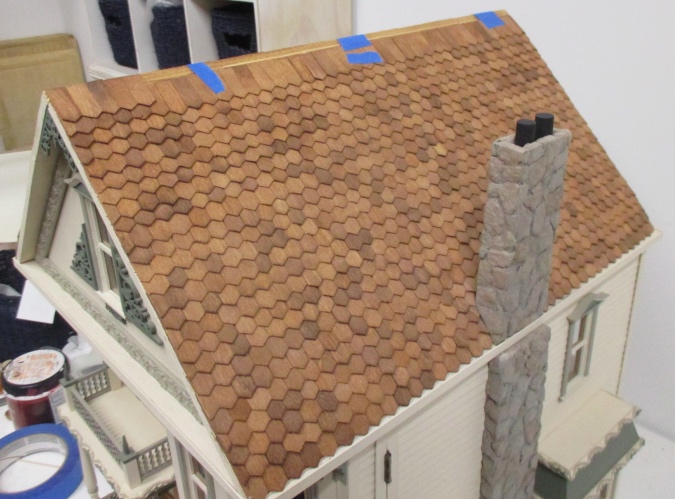
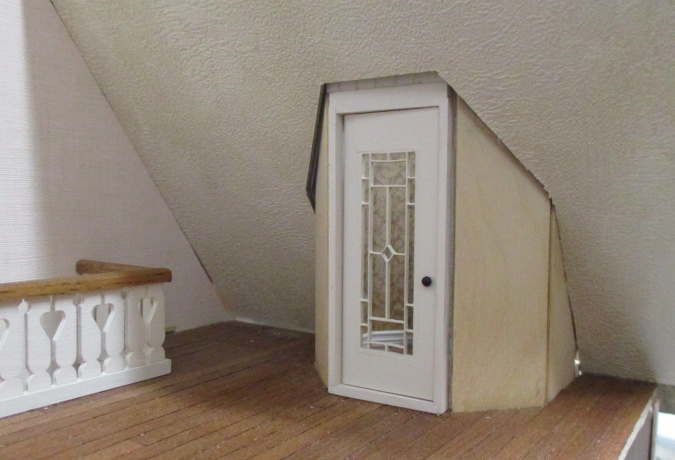
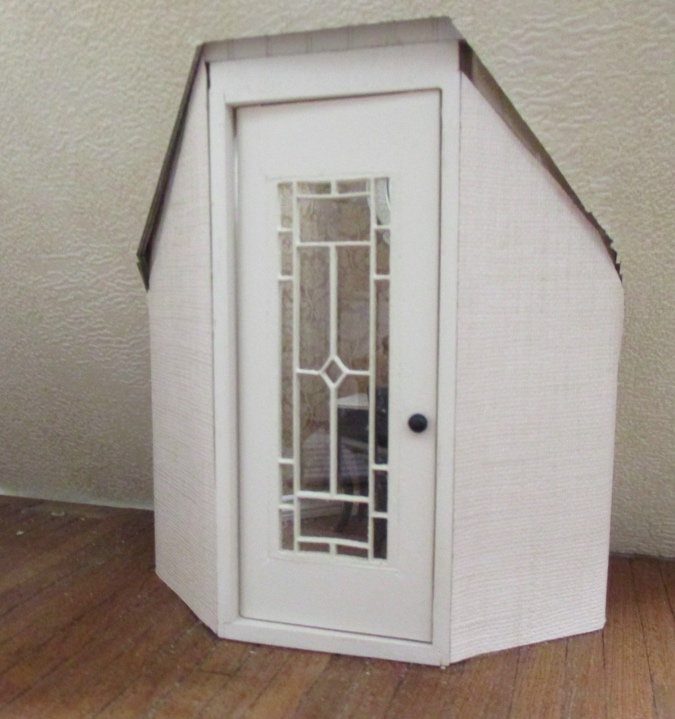
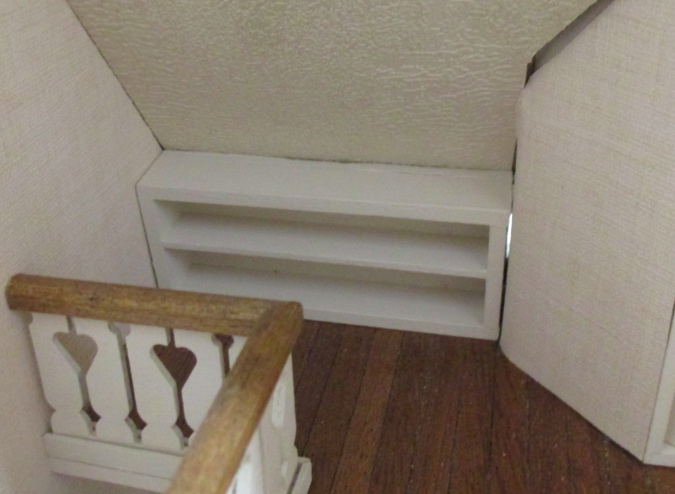
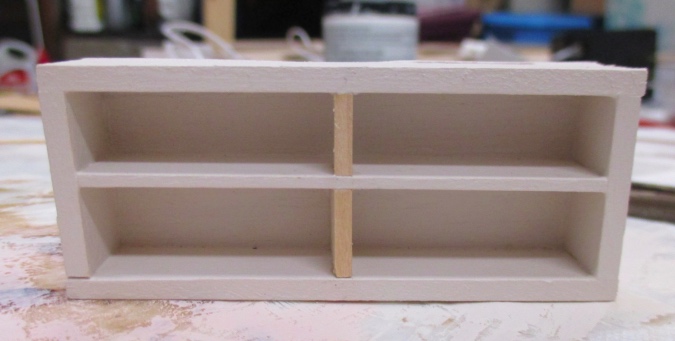
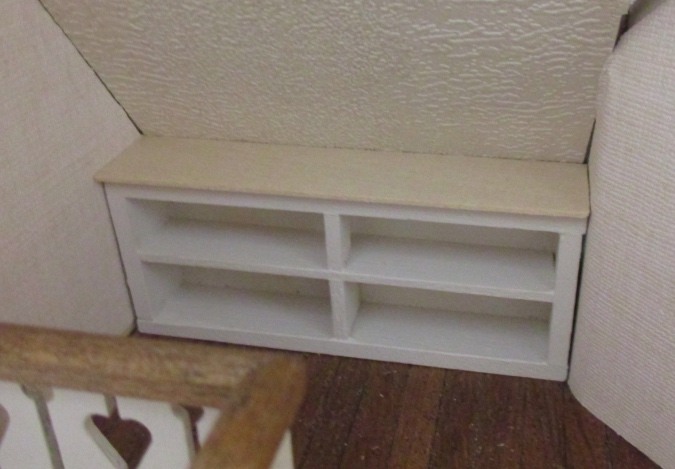
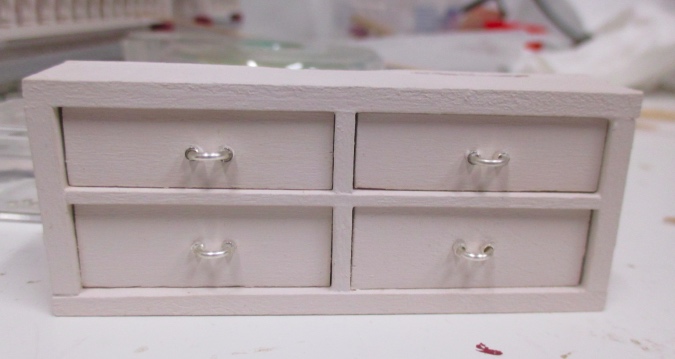
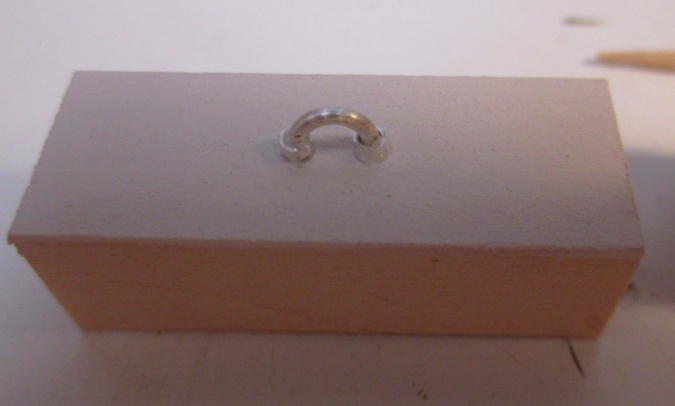
 Emily is a freelance writer, miniaturist, and adventure game enthusiast.
Emily is a freelance writer, miniaturist, and adventure game enthusiast.

